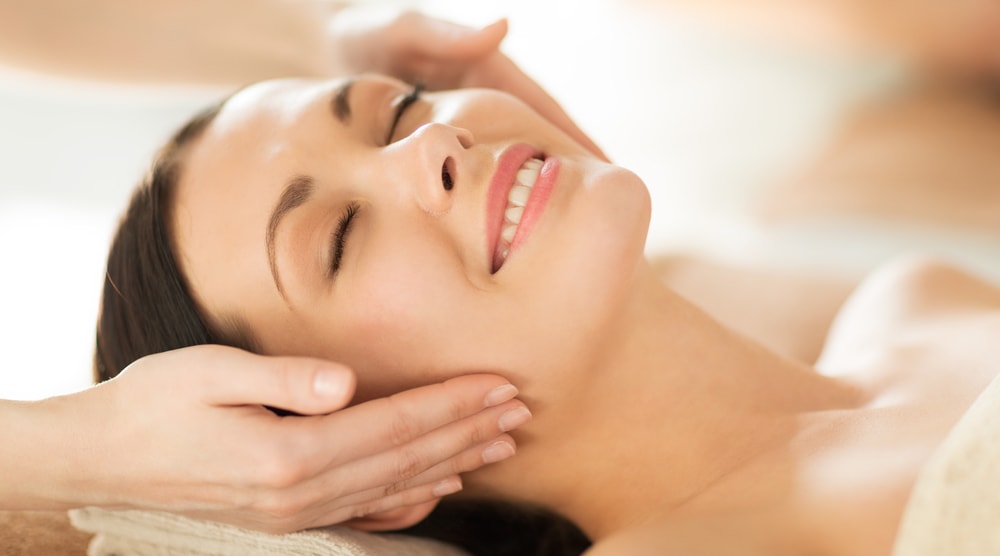The aging process makes a big difference in the appearance of a person. Signs of aging can appear on the face such as wrinkles, age spots, fine lines and blemishes. Thankfully, cosmetic facial rejuvenation treatments are available that help refresh and rejuvenate the appearance of the face thanks to the reduction or elimination of the above signs of aging, There are multiple cosmetic facial rejuvenation techniques available to patients trying to achieve a more youthful look. Let’s take a look at some of the most popular cosmetic facial rejuvenation procedures currently performed by cosmetic surgeons.
Cosmetic Facial Rejuvenation Procedures
- Acne blue light therapy is a cosmetic procedure that targets bacteria that causes acne to form on the face. This cosmetic treatment works best on moderate acne that has not been responsive to other treatments that reduce or eliminate acne from the face. Patients have a blue light source placed close to their face for 20-30 minutes. The light from the blue wavelength kills the bacteria on the face. Depending on the amount of acne on the face, it can take multiple treatments to achieve the desired results. The results are not permanent so patients will need follow-up treatments to maintain their results.
- A chemical peel is a cosmetic facial rejuvenation technique where a chemical solution is placed on the facial skin. The procedure is performed in the office of a doctor or a hospital setting. The facial area is cleansed before the chemical peel is placed on the face. Depending on the type of peel, the patient will feel anything form a slight tingling to a burning sensation. Chemical peels are classified as light/superficial peels, medium peels and deep peels. The chemical peel penetrates the skin and removes the top layers of the skin to reduce issues with the skin such as wrinkles, sun damage and uneven pigmentation. Chemical peels differ according to the ingredients in the peel and the strength of the peel. Light peels do not penetrate beneath the dermis of the skin. There will be some redness or pinkness similar to sunburn but there is no downtime after the treatment. Medium peels and deep peels will result in redness and swelling as well as some itching and crusting/peeling of the skin. Patients cannot wear any makeup until the peeling is completed. Light peels can be repeated on a yearly basis. A medium peel can be performed every two to three years while a deep peel can last for 10 years before another treatment is needed.
- Intense Pulsed Light (IPL) addresses the impact sun damage and aging have on the face. IPL can eliminate issues such as wrinkles, rosacea, brown spots and enlarged pores. A broad-spectrum light is used that pulses like the flash of a camera. The light is directed onto the targeted part of the skin so it is easily absorbed by the skin. The IPL device is moved over the area to be treated in swift, brief passes. There will be some swelling and redness after the treatment that will fade away after some time has passed. The results of IPL will last one to two years before a follow-up treatment is needed.
- Laser skin resurfacing is performed to remove the outer layers of the skin that have imperfections such as blemishes, age spots and uneven pigmentation. Laser skin resurfacing directs short beams of pulsating light onto the targeted area of the face. The laser can either be a carbon dioxide (CO2) laser that removes thin layers of skin or an erbium laser that removes the skin on the surface level in order to remove wrinkles and fine lines and rejuvenate the appearance of the face.
- Laser skin tightening uses an infrared light to tighten the skin. The laser light delivers heat that goes below the surface of the skin to stimulate the production of collagen and also tighten the skin.
- Microdermabrasion is performed by a cosmetic doctor using a handheld instrument to spray tiny crystals onto the skin surface. The crystals exfoliate the upper layers of the skin and then the doctor will suction the crystals and the dead skin cells off the patient. Most patients need multiple treatments to achieve the desired rejuvenated results that last anywhere from 6-12 months.
- Thermage is a radiofrequency device that tightens and improves the contours of the neck. The radiofrequency device is passed over the face and it has a tip that comes in contact with the surface of the skin. Radio waves from the device heat the deep layers of the skin in order to stimulate the production of new collagen. The result is skin that is tighter and smoother. The results will last for several years before patients need a follow-up treatment.
Cosmetic Facial Rejuvenation Consultation Appointment
Before patients have any type of cosmetic facial rejuvenation procedure, they need to schedule a consultation appointment with a board-certified doctor. The cosmetic doctor will conduct a physical examination of the patient to determine the current condition of the skin and to decide which cosmetic facial rejuvenation technique is the best choice to achieve the desired results. Plus, the cosmetic doctor will set realistic expectations for the final results so patients will not be disappointed by what they see after the final results are visible.
MA
